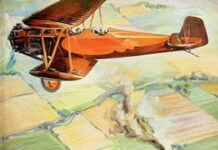Our imagination takes off as we watch leaves scurrying in the wind, as one takes off and glides a distance. We glance up at a bird lifting in the breeze. Humankind has achieved so many things. Why can we not soar into the air too?
The First Flying Machine Painted on a Wall
The ancients surely pondered over this a long while ago. They would have experimented with different ways to harness leaves, before an artist painted a picture of a kite in a cave on Muna Island, southeast Sulawesi, Indonesia approximately 9,000 years ago.

http://en.gocelebes.com/kaghati-worlds-first-kite/
The Muna people still fly kites in their religious rituals, because they believe they will transform into umbrellas to shelter them from the sun in the life hereafter. They make their frames from bamboo skins they cover over with tube leaves, and traditionally tether them with forest pineapple ropes.
The link to this particular chain is broken after that, and history remains silent for millennia until stories of kites arise in Mainland China. It’s reasonable to believe they used bamboo for the framework, fabric silk for the covering, and strong silk threads to control them. However, we only have legends to tell of those early days.
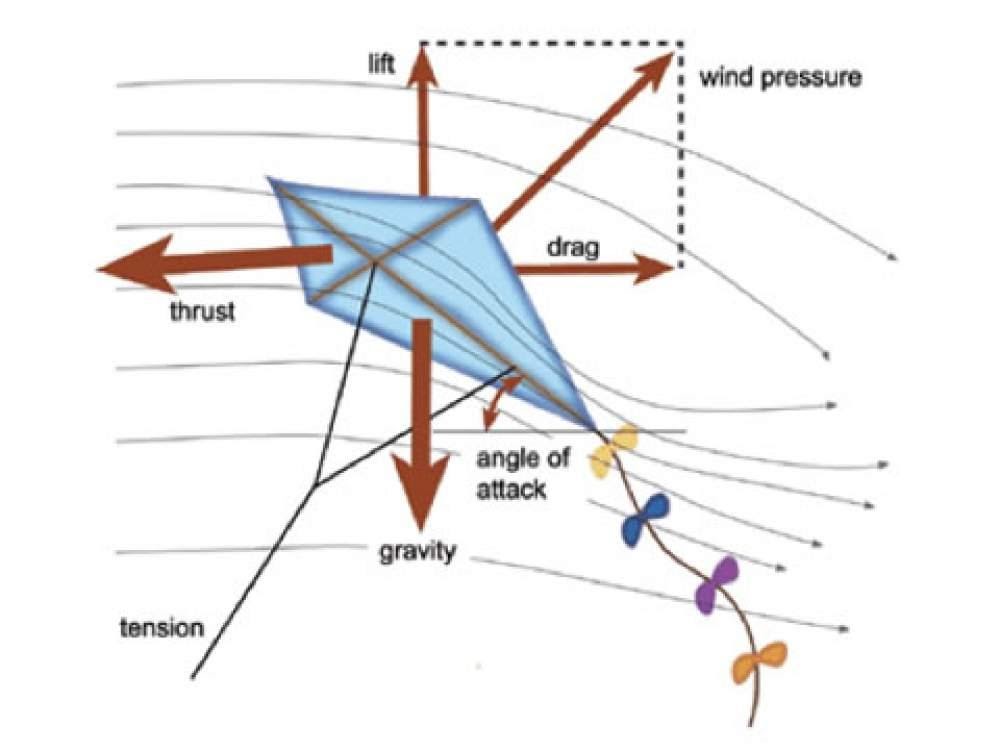
https://airandspace.si.edu/stories/editorial/how-kites-fly
Chinese Kite Flying – Snippets, Myths and Legends
Sun Tzu was a mighty Chinese general born in BC 544 according to tradition, and reputed author of The Art or War. He wrote “if you know your enemy and you know yourself you need not fear the results of a hundred battles”.
It seems plausible a Chinese military strategist would have wondered whether they could use a kite to peer across their enemy’s battle lines. We have no hard proof of this, but legends abound what these indomitable soldiers might have got up too.
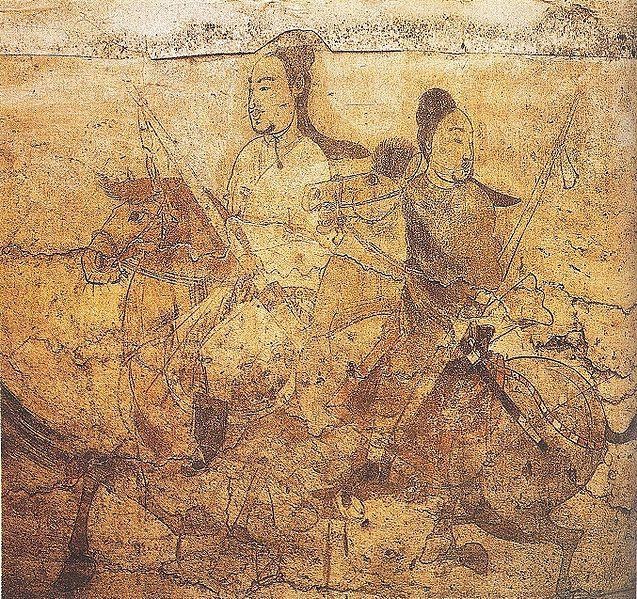
https://en.wikipedia.org/wiki/File:Riders_on_Horseback,_Northern_Qi_Dynasty.jpg
There’s a persistent story of kites carrying military scouts over enemy lines as far back as BC 1000. They would have terrified enemies into fleeing in panic, or surrendering themselves to the will of their foe
- The Book of Sui records how tyrant Gao Yang, Emperor Wenxuan of Northern Qi dealt with prisoners around BC 550. He ordered them to leap off towers and fly with bamboo mats. Only one succeeded. Were they the first test pilots?
Whatever the case we are on firmer ground a few years later, when it seems two Chinese philosophers Modi and Lu Ban invented a working kite. However, this was not the original invention if we remember the cave painting on Muna Island, of course.
What Ancient Sources Tell Us about The First Chinese Kites

https://line.17qq.com/article/igphjobdz.html
The first Chinese kites had flat surfaces, pretty much like the ones we may have flown as kids, and probably not unlike to one in the picture above dating from many centuries later.
Chinese military legends from the mid BC 500’s speak of generals:
- Using kites to measure distances to enemy front lines
- Testing wind strength and moving soldiers to forward positions
- Signaling, and carrying messages during military operations
Those kites were probably flat, often rectangular, and with tails for stability and direction. They may have had terrifying images on them. It’s believed some had strings and whistles to play music as they flew through the air.
A subsequent legend relates the story how Chinese general Han Hsin flew a kite over a town he had surrounded, to calculate his distance from it during the Han Dynasty (206 B.C.-220 AD).
His soldiers were then able to dig a tunnel, appear suddenly and accurately from underground, surprise their enemy and overwhelm them. Perhaps this is why we look up when we see people flying kites today.
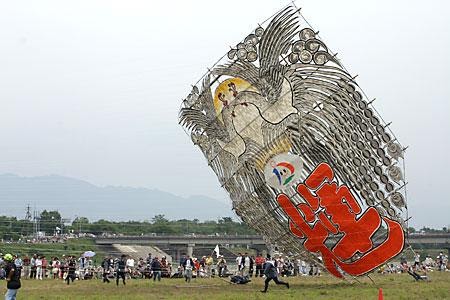
https://en.wikipedia.org/wiki/File:Yokaichi01.jpg
How Chinese Kites Travelled Through the World
The Chinese people took their kites with them everywhere they traveled. We suspect Buddhist priests carried them to Japan around 700 AD, where they used them to chase evil spirits and request rich harvests from the gods.
During the centuries that followed kites appeared in India, Polynesia and as far away as New Zealand. Later, explorer Marco Polo brought kites back to Europe in the 13th century at the end of his epic journey.
Kites were playthings after that for a long time, until scientists began to explore the air above them, and begin to dream of traveling to places as distant as the moon. Benjamin Franklin flew a kite in 1752 to prove that lightening was electricity.
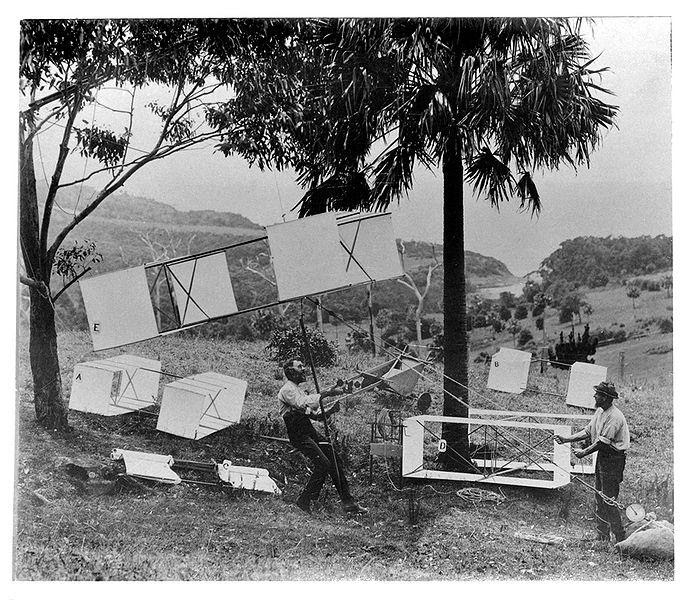
https://commons.wikimedia.org/wiki/File:Hargrave-demo.jpg
Sources:
- https://en.wikipedia.org/wiki/Muna_people
- http://en.gocelebes.com/kaghati-worlds-first-kite/
- https://en.wikipedia.org/wiki/Kite#History
- https://www.google.com/search?sxsrf=ALeKk03PXp6Cl2Li88gg2X3n966u0AnQ7Q:1597379044346&source=univ&tbm=isch&q=ancient+kite+site:wikimedia.org&client=firefox-b-d&sa=X&ved=2ahUKEwjx2YnU7JnrAhXVRxUIHWZyBTsQ7Al6BAgKEEA&biw=1600&bih=758
- https://en.wikipedia.org/wiki/The_Art_of_War
- https://www.aiaa.org/about/History-and-Heritage/History-Timeline
- https://en.wikipedia.org/wiki/Man-lifting_kite
- http://kite.org/education/history-of-kites/





